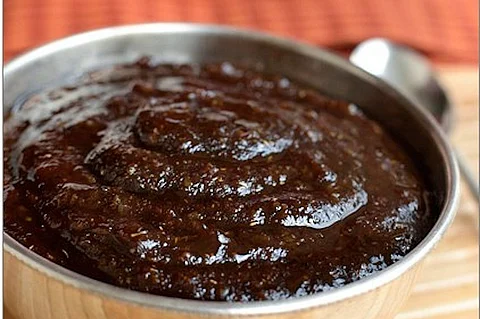

Over the last many years, ‘Diwali’ has become a festival of noise and pollution. It seems to have very less to do with spreading light and sobriety. There has also been a lot of commotion over the fact that this festival was never celebrated by South Indians as much as it was in the North. Yes, South Indians do not celebrate Diwali. ‘Diwala’ is a regional slang term used for someone who is bankrupt!
Instead, the term used across South is ‘Deepavali’. This has always been a grand festive affair across the states in South India. Some of the mainstream mythological stories connected to the festival come from North India. The return of Rama to Ayodhya in Treta Yuga, Krishna slaying Narakasura in Pragjyotishapuram (today’s Assam) in Dwapara Yuga, Mahavira, the founder of Jainism attaining Nirvana and so forth. The South, where Shakta cults were prevalent always celebrated Deepavali as a day for Kedara-Gowri Vratam and for Lakshmi Pooja. Deepavali is also celebrated a day earlier to whenever it is in the North according to the traditiona calendar. On the no moon night, known as Amavasya on the traditional Hindu calendar, during the time of Pradosha, the goddess of wealth is prayed to. The traditional communities of traders open their new account books and start business afresh. The festival also signifies the change of seasons. The days become shorter, nights get longer and winters set in.
This is probably the most festive occasion to celebrate a wide variety of foods. The list is long and one can go on about what all is cooked where. But nowhere else in the country will you come across a cure for the possible indigestion caused by eating so much food, except in a south Indian home. The ‘Deepavali Lehyam’ has a wonderful long history. Known to be a cure for several ailments, among which the seasonal flu, indigestion problems, this potent mixture has been handed down for generations, often as an oral tradition from mother to daughter. The word ‘Lehyam’ means a paste. The earliest references to this can be found in various texts to do with food and medicine in South. Someshvara III (1126- 1138) the west Chalukyan ruler who authored ‘Manasollasa’, Srinatha Kavi (1365-1450), the Telugu poet who authored Panditaaradhya Charitra and Basava Puranam and several other books mention this Lehyam. Whatever the antiquity of this might be, one cannot deny the curative values it has.
So what is this mysterious paste all about?
Dried ginger, turmeric powder, two varieties of black pepper corns (the stem called Kandathippili and the fruit called Arasithippili) and carom seeds are taken in equal measures. They are ground coarse in a grinding stone, which every traditional family kitchen was once proud of, before electric grinders replaced them. This powder mix is brewed with some hot water in a brass pot on a coal fire stove. To this mixture is added a few spoons of Gingely oil, Ghee from cow milk and jaggery in equal proportions. This is left to boil further till it turns into a pasty consistency. After it cools down, a few spoons of honey is added. This glazy black paste can be stored for a few weeks, if refrigerated. The recipe and taste varies a bit in different households. Some prefer adding poppy seeds (Khus Khus) to the powders, some others prefer making it into a dry hard ball, and yet many others prefer cooking it in clay, copper or tin (Velleeyam) pots. In any case, the Deepavali Lehyam is a must-have for everyone at home.

On the day of Deepavali, everyone is up early morning, before sunrise. The common tradition is for the ladies of the house to apply Gingely oil on the heads of the men. After that, everyone takes the mandatory oil bath. A spoonful of ‘Deepavali Lehyam’ is administered to everyone before they begin their day. Some people prefer having it after a heavy meal.
If you notice the ingredients of this Lehyam, all of them have high medicinal qualities according to the various treatises on Ayurveda like Charaka and Susruta Samhitas. Dry ginger and turmeric have antiseptic and anti-bacterial qualities, peppercorns maintains the natural warmth of the body in winters, carom seeds are good for digestion, jaggery and honey are sweetners to balance the intensity spice from the powder. Ghee has been an integral part of all Ayurvedic medicinal preparations and helps in digestion. A spoonful of this Lehyam is supposed to help in various ways. It helps fight the sudden winter cold, helps boost immunity, keep away any possible bacterial infections and help in digestion. Nowadays there are several brands that have come out with packaged Lehyam but they are no match to a good homemade one.
So, this Deepavali spread the light and not the noise. In whichever part of the world you are in, enjoy all the festival food you can. After that, go get your share of this special Deepavali Lehyam from the nearest South Indian friend’s home. A Happy Deepavali!
(Veejay Sai is an award-winning writer, editor and a culture critic. He writes extensively on Indian performing arts, cultural history, food and philosophy. He lives in New Delhi and can be reached at vs.veejaysai@gmail.com)
Image Courtesy: Satish Kumar, Keshavamurthy from his archives of old Vikatan issues.
Note: An image of an Ananda Vikatan cartoon was erroneously carried earlier and has since been removed.